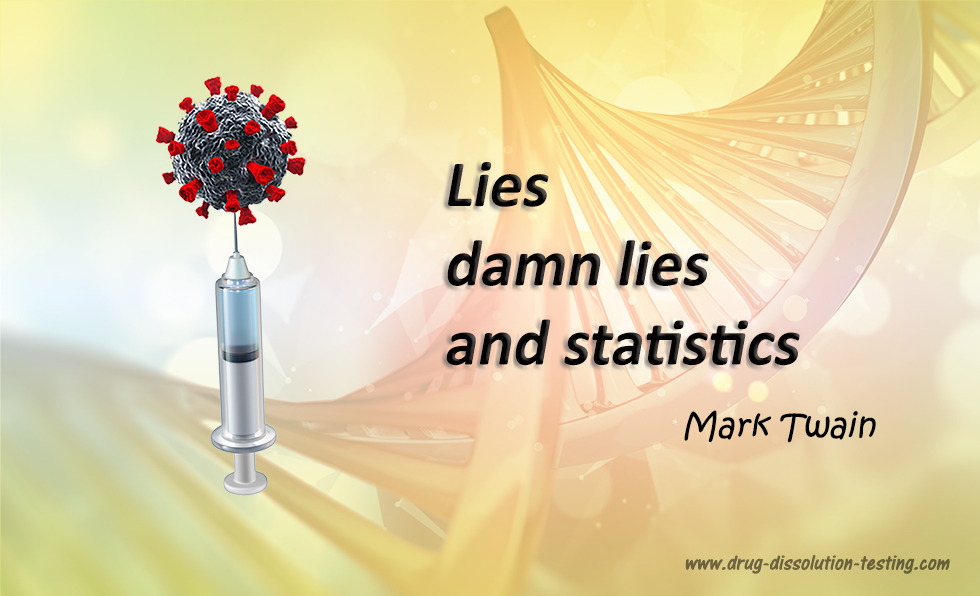
Someone inquired, “How would you interpret the 60% efficacy difference (decrease) for Emergency Use Approval? Or is it scandalous?”
For example, in a recent statement from CDC, it is described that “In its latest (27 Dec 2021) official guidelines, the CDC announced that “the efficacy against infection for a two-dose mRNA vaccine is approximately 35% !” (link).
It is one of the examples of the assumptions made in “medical science”/virology of many, I explained in one of my recent blogs (link).
People might have heard the saying lies, damn lies, and statistics – explaining that if one tortures the data enough, it will confess to anything (or any lie).
Calculating efficacy in virology is an example of a lie or torturing the data. First, the vaccine’s efficacy is determined based on a PCR test, which is a scientifically invalid. Therefore, it must never be used. It can never provide valid and relevant results or conclusions. (2) The vaccine efficacy is determined as Relative Vaccine Efficacy (RVE) but presented as the real or true Vaccine Efficacy (VE).
From the CDC website, “vaccine efficacy (VE) is interpreted as the proportionate reduction in disease among the vaccinated group. So a VE (it should be RVE) of 95% indicates a 95% reduction in disease occurrence among the vaccinated group or a 95% reduction from the number of cases you would expect if they have not been vaccinated”. (link). (emphases are mine).
In one of my blog posts, I described how the efficacy of the Pfizer-BioNTech vaccine was calculated, which is as follows “… the way the study outcome, i.e., vaccine efficacy, has been calculated is bizarre. The efficacy was calculated as follows; the number of infected people was counted in both groups (treated and placebo, about 20000 volunteers in each group) and found eight vs. 162. An assumption is made that as the treatment group has only eight infected subjects, not 162 as in the placebo, the vaccine treatment stopped 154 (162- 8) people from getting infected. It leads to the vaccine’s efficacy of 95% {(154/162)*100]. How about that!” (link).
On the other hand, there is no way of knowing that 162 or 8 people were really infected. It is just an assumption because these are only PCR positive numbers (not infections) from the invalid test. However, the way the vaccine efficacy is presented undoubtedly helped promote the success or use of vaccines. Now, mind you, interpretation is from a supposedly controlled study (“clinical trial”).
On the other hand, the reduction in numbers (efficacy) appears from hospital data. The actual number of volunteers or patients involved is not published and known to me (please share if anyone has such information). One requires (two PCR-positive) numbers (1) positive with vaccination (2) positive without vaccination. Let us assume one gets 130 positives with vaccination and 200 for unvaccinated for this discussion. The RVE will be 35% [{(200-130)/200}*100], hence a 60% reduction from the earlier 95%. They are finding relatively more positives with vaccination, thus, presumed reduction in efficacy.
In the real world, such data would be considered a failure of the vaccination, which indeed it is. However, it is promoted as a need for boosters in virology or vaccination. How nice!
In conclusion, “is it scandalous?” indeed, it appears so, as you asked.
